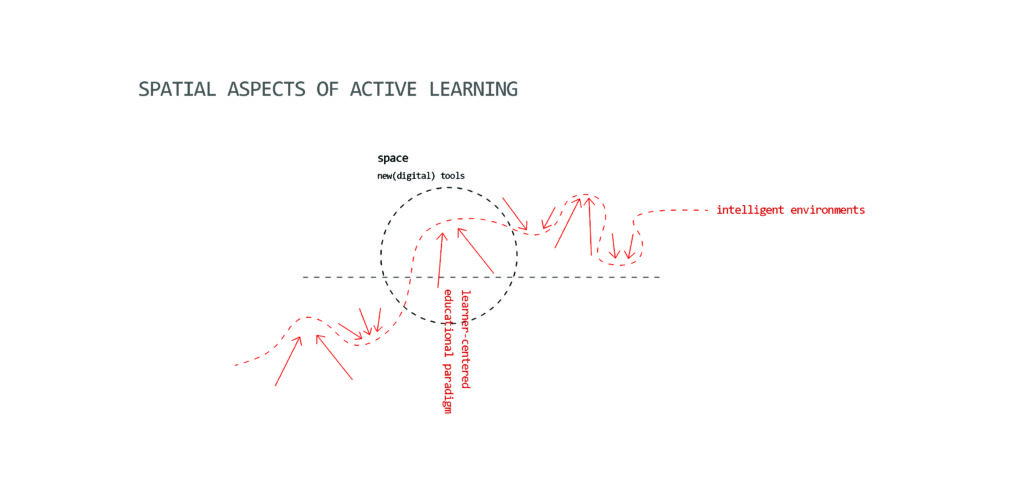İpek Kay, Mine Özkar
This paper explores the relationship between the design of active learning places for children and intelligent environments. With focus on active learning in the digital age, it articulates the various spatial relations in children’s interactions with the environment. The exploration is through a proposed theoretical framework where space overarches digital tools and plays the key part in the shift to the intelligent environments of the learner-centered educational paradigm. Assuming that children generally build and share their knowledge through spatial experience, we group spatial definitions of active learning into five categories: 1/ Pluralistic Setting, 2/ Participative Boundary, 3/ Bridge That Allows Interaction, 4/ Interface That Allows Practices, 5/ Place That Envisions Body Movements. Each category, even if relevant for digital interactions also, implies spatial organization schemas for the physical experience. The categories follow a path from children’s inner world to their relationship with the community. The child continually accumulates experiences in “learning by doing” and transmits knowledge to the community. The last category brings the cyclic path back to the child’s inner world through the role of the body. Spatial diagrams for each category are presented to guide the design bases of open-ended learning environments for children.
***The 9th International Conference on Intelligent Environments IE13, 16-19 July 2013, (Workshops on 16-17 July), Athens, Greece

